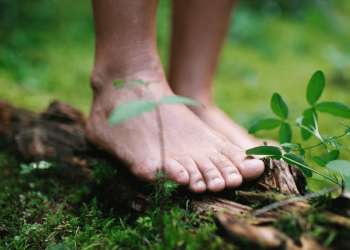In our fast-paced world, the idea of meditation often conjures images of sitting cross-legged on a cushion, eyes closed, attempting to quiet the mind. Yet there exists a powerful alternative that merges the contemplative benefits of meditation with the natural human activity of walking. Meditative walking, or walking meditation, offers a dynamic path to mindfulness that can be particularly appealing for those who struggle with seated practice or simply want to expand their meditative repertoire. This ancient practice, found in various forms across Buddhist, Christian, and secular traditions, transforms the simple act of walking into a profound vehicle for awareness, presence, and inner peace.
Understanding Meditative Walking
Walking meditation is fundamentally about bringing complete awareness to the experience of walking. Rather than treating walking as merely a means to reach a destination, practitioners use each step as an anchor for attention, much like the breath serves as an anchor in seated meditation. The practice shifts walking from an automatic, unconscious activity into a deliberate, mindful experience where every sensation, movement, and moment becomes an opportunity for awakening.
Unlike seated meditation, walking meditation naturally accommodates the body’s need for movement, making it an ideal practice for those with physical discomfort during sitting, people with restless energy, or anyone looking to integrate mindfulness into daily activities. It bridges the gap between formal meditation practice and everyday life, demonstrating that contemplative awareness need not be confined to the meditation cushion.
Different Approaches to Meditative Walking
Buddhist Walking Meditation (Kinhin)
In Zen Buddhist tradition, kinhin is practiced between periods of seated meditation. Practitioners walk very slowly in a circular or linear path, with hands typically held in a specific mudra (sacred gesture) at the chest or abdomen. The pace is deliberately slow sometimes taking a full breath for each step allowing meticulous attention to the mechanics of walking: the lifting of the foot, the moving forward, the placing down, and the shifting of weight. This methodical approach cultivates extraordinary precision of awareness and helps practitioners carry the depth of seated meditation into movement.
Vipassana tradition offers a slightly different approach, often practiced at a natural, moderate pace. Practitioners mentally note the components of each step with labels like “lifting, moving, placing” or simply “left, right.” This noting technique helps maintain continuous awareness and prevents the mind from wandering into distraction.
Thich Nhat Hanh’s Mindful Walking
Vietnamese Zen master Thich Nhat Hanh popularized a more accessible form of walking meditation that emphasizes peace, joy, and connection with the earth. His approach encourages walking at a natural pace while coordinating steps with breath and sometimes with poetic phrases or gathas. For example, practitioners might think “I have arrived, I am home” with each breath cycle, or “breathing in, I calm myself; breathing out, I smile.”
This style emphasizes the pleasure and healing quality of walking, encouraging practitioners to walk as if they are “kissing the earth with their feet,” bringing tenderness and gratitude to each step. It’s less formal than traditional Buddhist walking meditation and can be easily integrated into daily walks in nature or urban environments.
Secular Mindful Walking
Contemporary mindfulness programs have adapted walking meditation into secular contexts, stripping away religious elements while retaining the core contemplative benefits. These approaches focus on present-moment awareness through sensory experience: feeling the contact between feet and ground, noticing the movement of muscles and joints, observing the flow of breath, and maintaining awareness of surroundings without getting lost in thoughts about them.
Secular mindful walking might be practiced during a lunch break, while walking to a meeting, or during a designated walk in nature. The emphasis is on accessibility and practical application rather than achieving specific spiritual states.
Labyrinth Walking
In Christian contemplative traditions and various spiritual paths, walking labyrinths offers a meditative walking experience with symbolic significance. The practitioner follows a winding path that leads to a center point and back out again, using the journey as a metaphor for life’s spiritual journey. While walking, practitioners may pray, reflect on a question, or simply maintain open awareness. The predetermined path removes decisions about where to go, freeing the mind to be present with the experience and whatever arises internally.
The Multifaceted Benefits of Walking Meditation
Physical Benefits
Walking meditation provides gentle physical exercise that improves circulation, strengthens leg muscles, and enhances balance and coordination. The slow, deliberate pace often used in formal practice develops proprioception awareness of body position and movement which can improve overall body mechanics and reduce injury risk in daily activities. For people with chronic pain or mobility issues, walking meditation offers a low-impact way to stay active while cultivating body awareness that can inform better movement patterns.
The practice also serves as a counterbalance to our sedentary modern lifestyle. Rather than remaining motionless in seated meditation, walking meditation keeps the body gently active, preventing stiffness and promoting healthy lymphatic circulation. Many practitioners find that alternating between seated and walking meditation creates an ideal balance for extended practice periods.
Mental and Emotional Benefits
One of the most profound benefits of walking meditation is its ability to anchor attention in the present moment, training the mind to resist its habitual tendency to ruminate about the past or worry about the future. This present-moment awareness creates a sense of calm and clarity that can persist beyond the formal practice session.
Regular walking meditation practice reduces stress and anxiety by activating the parasympathetic nervous system the body’s natural relaxation response. The rhythmic nature of walking, combined with focused attention, creates a meditative state that can lower cortisol levels and promote emotional regulation. Many practitioners report that walking meditation helps them process difficult emotions and gain perspective on challenging situations.
The practice also enhances concentration and mental clarity. By repeatedly bringing wandering attention back to the physical sensations of walking, practitioners strengthen their ability to focus, which translates into improved performance in work, relationships, and other areas of life. Unlike seated meditation, where drowsiness can be a challenge, walking meditation naturally promotes alertness while still cultivating deep mindfulness.
Spiritual and Existential Benefits
Beyond stress reduction and improved focus, walking meditation offers doorways to deeper spiritual insights. The practice reveals the profound truth that we’re always arriving, that life exists only in the present moment, and that peace is available with every step. Practitioners often report experiencing a sense of connection to their bodies, to the earth, to nature, and to something larger than themselves.
Walking meditation can dissolve the artificial boundary between “meditation practice” and “daily life,” demonstrating that any moment, any activity, can be infused with awareness and presence. This recognition transforms life itself into a continuous practice, where washing dishes, commuting to work, or walking to the mailbox becomes an opportunity for awakening.
How to Practice Walking Meditation
Formal Practice
To begin a formal walking meditation practice, find a quiet path or space where you can walk back and forth for 10 to 30 steps without obstacles. This could be indoors or outdoors. Stand at one end of your path with feet hip-width apart, arms relaxed at your sides or hands clasped gently in front or behind you.
Take a few moments to settle into your body, feeling the contact of your feet with the ground, noticing your posture, and taking several conscious breaths. When ready, begin walking at a pace slower than normal. As you walk, bring your attention fully to the physical sensations of walking: the lifting of your foot, the movement through space, the placing down, and the shifting of weight to that foot as the other prepares to lift.
You might mentally note these stages: “lifting, moving, placing, shifting” or simply “left, right.” When you reach the end of your path, pause, breathe, then turn slowly and continue. If your mind wanders and it will gently note “thinking” and return attention to the sensations of walking. Start with 10-15 minutes and gradually extend the duration as the practice feels comfortable.
Informal Practice in Daily Life
The true power of walking meditation emerges when you integrate it into daily life. Choose regular walking activities your commute to the bus stop, walking the dog, moving between meetings and designate them as opportunities for mindfulness. You don’t need to walk slowly or appear unusual; simply bring full attention to the experience of walking.
Feel your feet making contact with the ground with each step. Notice the swing of your arms, the movement of your legs, the flow of your breath. Observe your surroundings with fresh eyes, as if seeing them for the first time. When thoughts arise about your to-do list or past conversations, acknowledge them without judgment and return to the direct experience of walking.
Walking in Nature
Natural settings offer particularly rich environments for walking meditation. A forest path, beach, or park provides sensory richness bird songs, wind in trees, the scent of flowers that can deepen your practice. In nature, you might expand awareness beyond just the body to include the entire sensory field: sounds, smells, visual beauty, temperature, and air movement against your skin.
Nature walks can be done at a natural pace, pausing occasionally to fully take in a vista, observe a flower, or simply stand in awareness. This approach, sometimes called “forest bathing” or shinrin-yoku in Japanese culture, combines the benefits of nature exposure with mindfulness practice, offering enhanced stress reduction and emotional well-being.
Tips for Developing Your Practice
Start slowly and be patient. If you’re new to meditation, walking meditation might feel awkward or frustrating initially. This is completely normal. The mind has spent years in habitual distraction; training it to stay present takes time and gentle persistence.
Experiment with pace. Try very slow walking, moderate pace, and even brisk walking meditation. Different speeds offer different experiences and benefits. Very slow walking develops minute attention to detail; natural pace is easier to integrate into daily life; brisk walking can be energizing and particularly suitable for people with restless energy.
Use variety. Combine walking meditation with other practices. You might begin a session with seated meditation, then walk, then return to sitting. This variation prevents restlessness and creates a balanced practice that honors both stillness and movement.
Let go of expectations. Walking meditation isn’t about achieving a special state or having a particular experience. It’s simply about being present with walking. Some sessions will feel peaceful and clear; others might feel scattered or difficult. Both are valuable opportunities for practice.
Consider using supports. Guided walking meditation recordings, apps, or joining a meditation group can provide structure and encouragement, especially when beginning. Many meditation centers offer walking meditation instruction as part of their programs.
Practice self-compassion. When your mind wanders repeatedly and it will treat yourself with kindness rather than self-criticism. The moment you notice distraction is actually a moment of awareness, not failure. Gently return attention to walking, again and again, with patience and friendliness toward yourself.
Conclusion: The Path Beneath Your Feet
Walking meditation reveals a profound truth: the spiritual path is not somewhere else, not in the future, not dependent on special circumstances. It’s here, now, beneath your feet with each step you take. Whether practiced formally in a meditation hall, informally during your daily commute, or contemplatively in nature, walking meditation offers a practical, accessible way to cultivate presence, peace, and awakening in the midst of an active life.
In a culture that values speed, productivity, and constant mental stimulation, the simple act of walking with awareness becomes a revolutionary practice. It demonstrates that we need not be carried away by the momentum of modern life, that we can choose presence over distraction, that peace is always available when we remember to come home to the here and now.
As you develop your walking meditation practice, remember that every step is both the journey and the destination. You’re not walking to become more mindful in the future; you’re awakening to the mindfulness that’s available right now, with this step, and this one, and this one. The path of awakening is walked one conscious step at a time, and that path begins wherever you are, whenever you choose to arrive fully in the present moment. Each step becomes a statement: “I am here. I am alive. I am awake to this precious moment.” And in this simple yet profound practice, we discover that we’ve been home all along.






